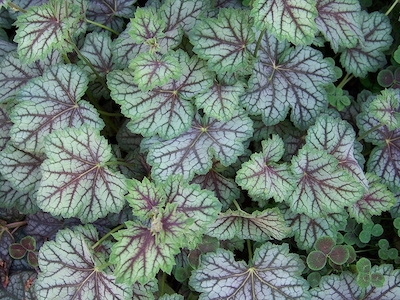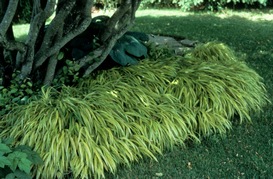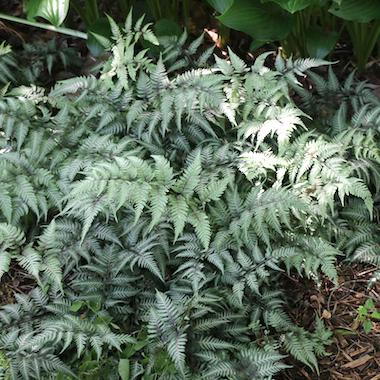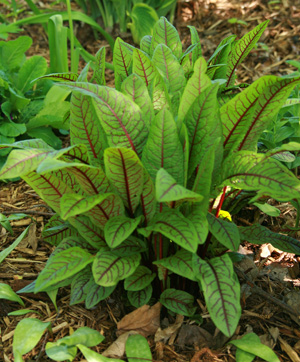Brighten Up Shady Areas with Colorful Foliage
By Ann M Mason, Fairfax Master Gardener Intern
Gardening in shade challenges every gardener. We define shade as less than four hours of sun, including dappled shade filtered by trees. While there are lots of wonderful green foliage plants for a serene calm garden setting, some of us want to add a bit of color for garden “bling.” What to choose? I searched the recommendations from many gardening experts, and each has their favorite ‘go-to’ plants to add colorful foliage.

Heuchera americana coral bells
Many gardeners recommend Hosta. With all the various leaf colors and sizes, these are great choices, and I have spent many happy hours looking at them in the garden center. However, my nightly four-legged visitors think that I have planted food for them.
Another plant widely listed by garden experts is dead nettle. Now, I have always considered dead nettle a weed. The weed is purple deadnettle, Lamium purpureum, a winter annual that emerges in the fall, flowers and sets seed, which results in aggressive spread. In contrast, what experts recommend for shade is its cousin the prostrate, herbaceous, almost evergreen perennial Spotted Deadnettle, Lamium maculatum. Both Lamiums are members of the mint family. I have always shied away from this pretty perennial plant because I confused it with the pretty but insidious weed in my front garden. Given the number of recommendations, I need to reconsider whether Lamium maculatum plant might have a place in my shady back yard, especially because it has few pest problems and is not the first choice of deer.

Japanese grass Hakonechloa
Of course, ferns are the backbone of the shady garden. Japanese Painted Fern (Athyrium niponicum ‘Pictum’) contributes lovely pale cream color with its silvery purple fronds. One of my favorite ferns is the Lady Fern (Athyrium filix-femina). I was pleased to read the plant evaluation notes from the Chicago Botanic Garden, Comparative Study of Lady Ferns and Japanese Painted Ferns. Both ferns offer gracious companionship to other shade loving plants if their growth conditions are met — adequate water in well drained soil and partial to full shade.

Japanese Painted Fern
While not a plant with colorful leaves, mass plantings of the native Woodland Phlox, Phlox divaricata, brighten up the part to full shade with lavender or violet blooms in April and May. Again Mt. Cuba Center offers gardeners insights with its report of the best performing phlox for shade, including P. divaricata ‘Blue Moon,’ P. stolonifera ‘Fran’s Purple,’ P. stolonifera ‘Home Fires,’ P. stolonifera ‘Pink Ridge,’ and P. stolonifera ‘Sherwood Purple.’

Bloody sorrel, Rumex sanguineus
Many of these lower growing plants with colorful leaves become great companions to shade-loving ferns, trees and shrubs. This includes Hydrangea macrophylla, which sports mop head flowers that grow on old wood (hint to prune at the correct time). Give this hydrangea morning sun and dappled afternoon shade for a reliable shrub and companion to plants with colorful foliage.
Resources
Shade Gardening with Colorful Foliage, Chicago Botanic Garden
Heuchera Report, Mt. Cuba Center
Phlox for Shade Report, Mt. Cuba Center
Tradescantia (Andersoniana Group) ‘Sweet Kate‘, Missouri Botanical Garden
Purple deadnettle (Lamium purpureum L.), Michigan State University Extension
Spotted deadnettle, Lamium maculatum, Susan Mahr, University of Wisconsin-Madison Extension
Bloody Dock, Rumex sanguineus, Susan Mahr, University of Wisconsin-Madison Extension
Comparative Study of Lady Ferns and Japanese Painted Ferns, Richard G. Hawke, Chicago Botanic Garden